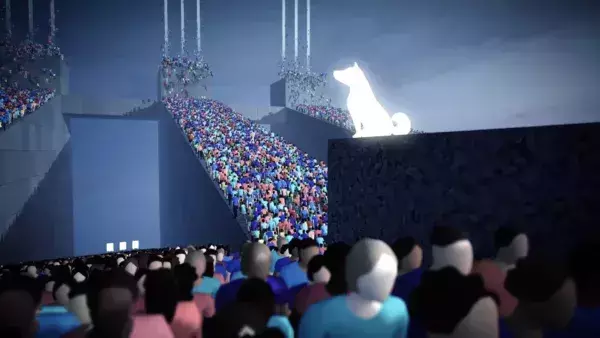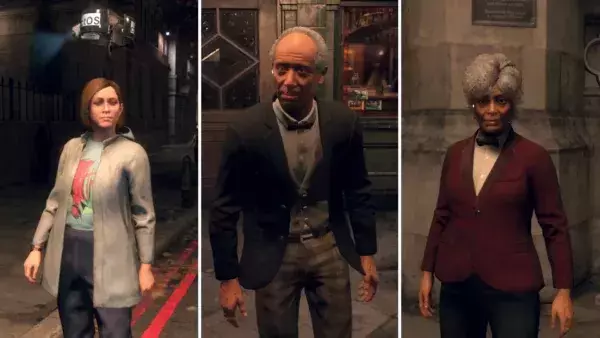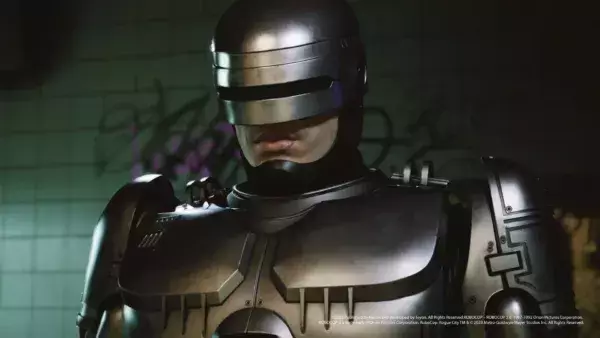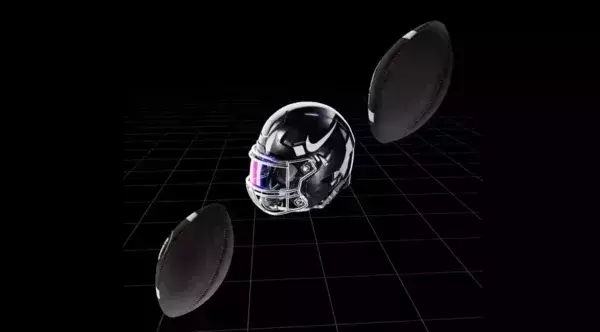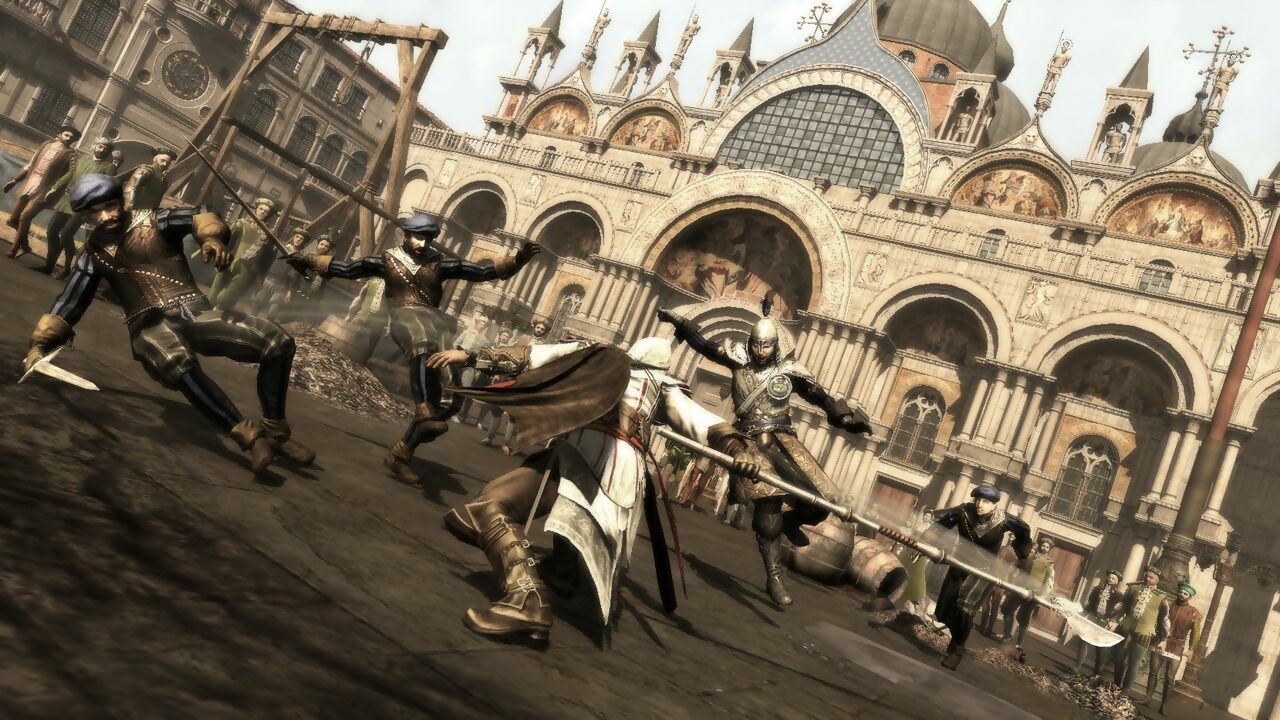
Although common in the real world, squares are perplexingly rare in video games. Game designers tend to emphasise roads, buildings, sewers, pubs, and the odd traversable roof, while squares are often neglected. And yet they remain some of the most important social hubs in any city or town – they’re bustling nodes of activity; spaces of spectacle where intersecting systems flow.
A brief history
Defining the town or city square is simple: it’s usually an open, public, civic space. In many cases, squares are centrally located, whether they lie at the core of a city or at the busiest crossroads of a neighbourhood. Squares are designed to act as community nodes on a variety of scales, and because communities require space for all types of activities – solitary, common, political, institutional, leisurely, commercial, and so on – squares tend to adapt or shape their spaces and uses accordingly.

By focusing on the road and relying on in-game mobile phones, the 3D Grand Theft Auto games – and indeed GTA 3 – have ignored city squares
The ancient Athenian agora, for example, was a gathering place for commercial and religious activities, and also provided residents with the opportunity to gather and discuss. Crucially, though, it also served as the place where politics happened; it was the spatial centre of democracy. The subsequent Roman Forum kept many of the agora’s functions, added the adjacent buildings of the basilica and theatre, and expanded its activities to also host triumphs and support administration buildings. Following the rise of the Empire, the forum lost its democratic functions, but remained an increasingly important commercial, judicial, and religious node, always situated at the centre of the city.
The Dark and Middle Ages did little to diminish the importance of the square. Instead, it rose as one of the key defining characteristics of urbanism. Featuring cathedrals and often guild-houses or town halls, it was a prominent place commonly used as a marketplace, but also serving as an area to hold religious ceremonies or public executions. Though often stunningly beautiful, the medieval square rarely reached the over-designed spectacle of the Renaissance plaza – a deeply ideological place typically created to celebrate and impose authority or its values.

Half-Life 2 condenses City 17’s physiognomy into the train-station plaza; the first urban location players visit is oppressive, devoid of life, and derelict
Modernity kept many of the square’s pre-existing characteristics, while also adapting it to the needs of car traffic, contemporary life, capitalist economy, and modern aesthetics. The ideological characteristics of central squares remained strong – compare Times Square and Red Square during the Cold War – and could range from a parliament square meant to hold celebrations, to a neighbourhood space with a park, coffee shop, and a playground.
Squares were never a European peculiarity. China, Iran, Indonesia, Egypt, and major Mesoamerican cultures all had a long history of pre-capitalist squares. Chief among them was Tenochtitlan’s main square, which dwarfs the already-huge Mexico City one that took its place. It was a walled space, 500 metres by 500 metres, and functioned as a major ceremonial centre sporting 45 public buildings and the temples where human sacrifices took place.
Gaming squares
In a game, a square could have any set of functions compatible with its setting, and support any new need an imaginary city might demand. It could thus be an administrative centre with a processional space, allow for an orchestra to perform, for people to meet their friends over a glass of wine, or for merchants to sell their wares. It could also sport a maglev station and an area reserved for AI or magical vendors.
Ensuring that game squares are both centres of social life and actually representative of said life is key. City 17’s train-station plaza in Half-Life 2 succinctly showcased just how emphatically familiar activity has collapsed in its dystopia; meanwhile, Gabriel Knight’s New Orleanian Jackson Square emphasised the prevalence of voodoo, art, and jazz in that area.
When designing a virtual square, we should consider the functions the square was intended to support; we don’t necessarily have to prescribe all the activity that will happen on it. A demonstration can take place on a plaza created to celebrate the power of authority, for example. Similarly, as history moves on, a square’s initial intended use may change, as we see when modern people play drinking games on religious, possibly once-sacred places. Squares are places meant for the wider public, and thus are places to be contested and appropriated.
Ideological and political power struggles influence the politically significant landmarks commonly located on squares. Often a temple or an institutionally important building is emphasised by having a square in front or around it. The open space adds to the spectacle, and often attracts it. The iconic sculpted fountain of Fontana di Trevi, for instance, completely dominates the Piazza di Trevi, which only exists to showcase it and is now a major tourist spot. On the other hand, the column of Paris’s Place Vendôme, tellingly also previously known as Place Louis-le-Grand but also Place Internationale, is characteristic. Revolutionaries destroyed it during the days of the Paris Commune, only for it to be rebuilt during Adolphe Thiers’ counter-revolutionary terror.
Before it can be contested though, a square has to be designed. Depending on its intended functions and location, said design and style can vary wildly. The square can be covered in earth or concrete. It can also be paved or feature distinct sub-areas that combine earth, park space, or gravel. It may be separated in specific areas, including a playground, a fountain, and so on. It can be anything from cosy to imposing in size, and from oblong to circular in shape. It may be designed for a specific class or group or even at a specific function like, say, a carnival or a procession. It can feature fountains, benches, stalls, street lights, and palm trees, or, as in Majora’s Mask, an imposing clock tower.


